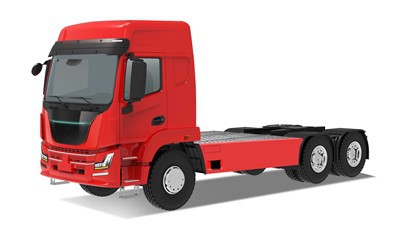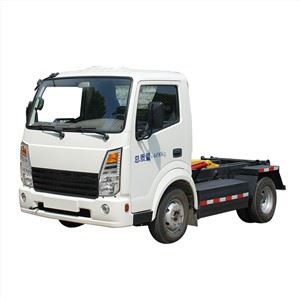Understanding Cab & Chassis Trucks: Your Ultimate Guide

Cab & chassis trucks are versatile vehicles designed with a cab (the driver’s area) and an open frame that is built to accommodate various types of truck bodies. This guide will explore everything you need to know about cab & chassis trucks, their advantages, uses, and tips for selecting the right one for your needs.
What Is a Cab & Chassis Truck?
A cab & chassis truck is a customizable vehicle that separates the driving area from the cargo space. This type of truck provides a sturdy base for mounting different types of equipment or body configurations, making it ideal for businesses that require specialized vehicles.
Key Features of Cab & Chassis Trucks
- Durability: Built with heavy-duty frames to support various payloads.
- Customization: Ability to add specific bodies like flatbeds or box trucks.
- Versatility: Can be outfitted for different applications including HVAC service, plumbing, and emergency services.
- Power Options: Available with various engine sizes and configurations to meet different demands.
The Advantages of Cab & Chassis Trucks
Choosing a cab & chassis truck comes with several benefits, which include:
1. Customizable Configurations
One of the standout features of cab & chassis trucks is their ability to be tailored to specific business needs. Depending on the type of work, you can choose to mount:
- Refrigerated bodies for food delivery.
- Flatbeds for heavy equipment transport.
- Dump bodies for construction sites.
2. Improved Payload Capacity
These trucks are designed to handle heavy loads, enabling them to carry more compared to standard pickup trucks. This feature is crucial for industries that rely on transporting heavy equipment or goods.
3. Enhanced Stability
Thanks to their robust design and lower center of gravity, cab & chassis trucks provide greater stability while driving. This is particularly important when carrying heavy loads or navigating uneven terrain.
Types of Cab & Chassis Trucks
Several models of cab & chassis trucks exist, each catering to different requirements:
1. Standard Cab & Chassis
This is the most common type and comes in various sizes. It offers a straightforward design suitable for many applications.
2. Crew Cab & Chassis
Featuring a larger cab, this model accommodates more passengers, making it suitable for jobs that require teamwork.

3. Extended Cab & Chassis
This option provides extra seating and storage space for tools and equipment, ideal for contractors.
Choosing the Right Cab & Chassis Truck
Selecting the perfect cab & chassis truck requires careful consideration of several factors:
1. Determine Your Payload Requirements
Consider what you will be transporting and the weight limits for your business. Understanding your payload requirement will guide you in choosing the right model.
2. Evaluate Engine Options
Cab & chassis trucks come with varying engine sizes and types. You may want to choose between gas or diesel engines, depending on your expected mileage and usage.
3. Assess Your Body Options
| Body Type | Best For |
|---|---|
| Flatbed | Construction, landscaping, equipment transport |
| Van Body | General freight, cargo transport |
| Dumper | Construction site waste removal |
| Wrecker | Towing and recovery services |
Installing Body Types on Cab & Chassis Trucks
Once you’ve chosen a cab & chassis truck, the next step is to select and install an appropriate body type. Some practical examples include:
1. Flatbed Installation
Flatbeds allow for flexible loading and unloading of cargo. They are especially useful for transporting oversized items that are not easily loaded into standard truck beds.
2. Box Truck Installation
Box trucks provide enclosed storage space, ideal for businesses that need to protect their deliveries from the elements.
3. Custom Upfits

Specialty vehicles can be created by working with manufacturers to design a body that meets very specific operational needs, such as refrigeration for deliveries in the food sector.
Maintenance and Care for Cab & Chassis Trucks
Regular maintenance is crucial for the longevity and performance of cab & chassis trucks. Consider the following tips:
1. Regular Inspections
Schedule regular inspections to catch any potential problems early. This helps in ensuring safety and reliability.
2. Fluid Checks
Regularly check and replace fluids such as engine oil, transmission fluid, and brake fluid, as needed.
3. Tire Maintenance
Invest in quality tires and regularly check their pressure and tread depth. Proper tire maintenance is essential for safety and efficiency.
Cost Considerations When Buying Cab & Chassis Trucks
The cost of cab & chassis trucks can vary significantly based on several factors:
1. Base Model Prices
The price of the truck itself will depend on the manufacturer, model, and additional features.
2. Body Installation Fees
Installation of bodies can also add to the cost, especially if you require custom solutions.
3. Operating Costs
Consider the fuel efficiency of the truck, maintenance costs, and insurance when budgeting your purchase.
Frequently Asked Questions
1. What is the difference between a cab & chassis truck and a pickup truck?
Cab & chassis trucks provide a customizable open frame for specific body types, whereas pickup trucks come with fixed beds and are generally smaller.
2. Can I use a cab & chassis truck for personal use?

Yes, cab & chassis trucks can be used for personal purposes, especially if you need to haul heavy loads or perform specific tasks.
3. How do I choose the right body type for my cab & chassis truck?
Assess your hauling needs, typical cargo dimensions, and whether you need enclosed storage or an open frame for easy loading.
4. Are there financing options available for cab & chassis trucks?
Yes, many dealerships and banks offer financing options tailored for commercial vehicles, including cab & chassis trucks.
5. What kind of warranty do cab & chassis trucks come with?
Warranties vary by manufacturer but typically include coverage for the engine, transmission, and other essential components for a certain period or mileage.
6. How can I maximize the lifespan of my cab & chassis truck?
Regular maintenance, timely repairs, and proper usage as per the manufacturer’s guidelines can significantly increase the lifespan of your cab & chassis truck.
